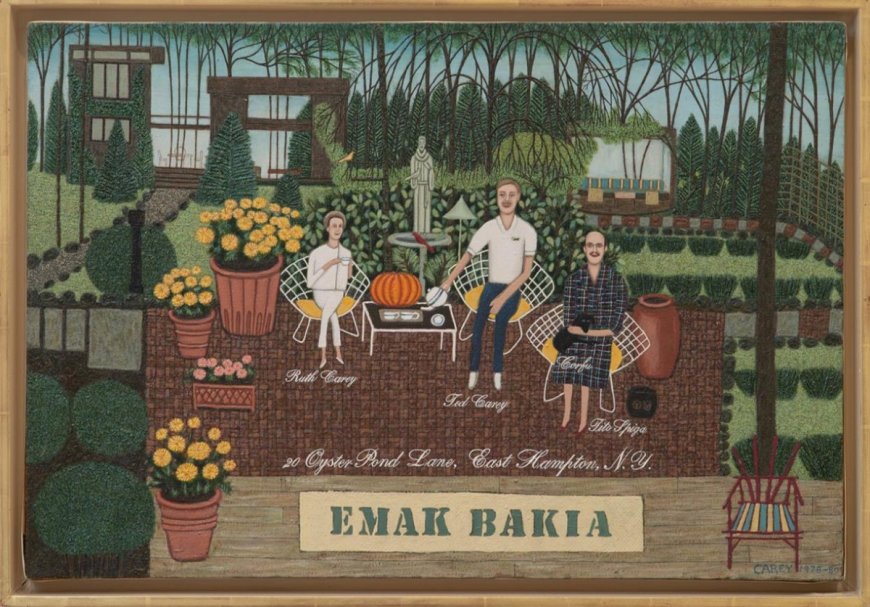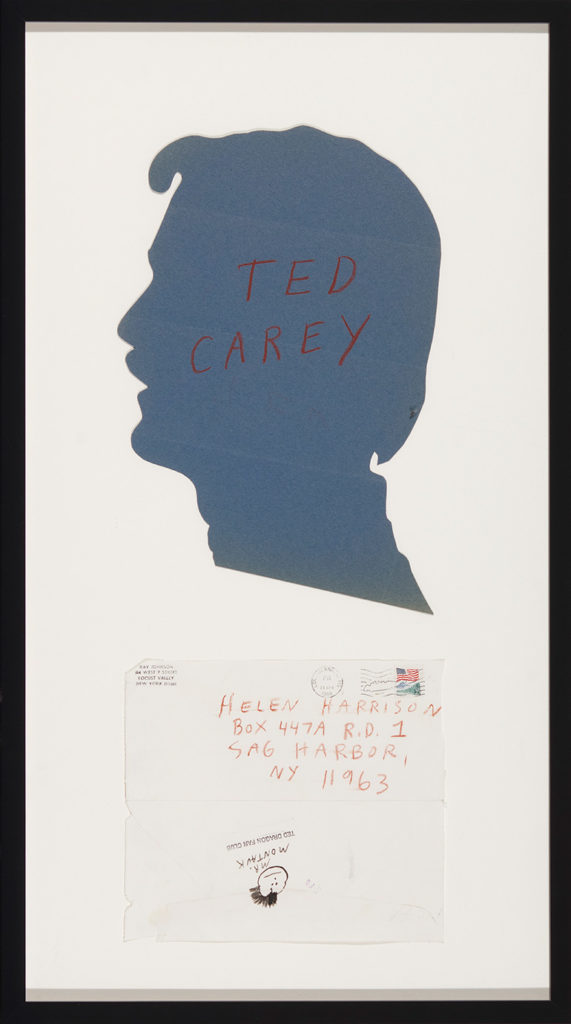Ted Carey Is Out from the Shadows & ‘Queer As Folk’ at Guild Hall
On view through July 14 at Guild Hall in East Hampton, Ted Carey: Queer As Folk is a small exhibition with importance well beyond what may at first appear to its limited scope. The nine-painting show is in fact quite broad for Edward “Ted” Fawcett Carey, displaying most of the artist’s entire body of work,... Read More

On view through July 14 at Guild Hall in East Hampton, Ted Carey: Queer As Folk is a small exhibition with importance well beyond what may at first appear to its limited scope. The nine-painting show is in fact quite broad for Edward “Ted” Fawcett Carey, displaying most of the artist’s entire body of work, due to his early death from AIDS at just 53 years old.
The paintings are done quite deliberately in the style of American folk art by a man who could likely create any style he wanted. Before this exhibition shed a bit more light on Carey and his work, he was something of a footnote from the life of artists Andy Warhol and the lesser known Ray Johnson, who was resurrected from the Guild Hall permanent collection with a show full of references to Carey in 2018.
“Anybody who would read about Warhol’s early life and career would probably encounter the name Ted Carey. For four or five years they were constant companions,” Ted Carey: Queer As Folk curator Matthew Nichols, PhD says, explaining that he studied Warhol’s early career for his doctorate, and that eventually led him to Carey.
“I guess that name was in my memory banks, so when I was looking a few years ago at the newly digitized Guild Hall permanent collection, I recognized his name. Otherwise, I was looking at thumbnail images, so I don’t necessarily think I would have spent a lot of time exploring them any further, but because the name rang a bell and I had done that research in my dissertation, I wanted to explore them, which I did,” Nichols adds, pointing out that he wanted to pull Carey out of obscurity, and the shadow of Warhol and even Johnson, so his work could be appreciated in its own context.
“It’s a very unique body of work and it’s a very singular creative achievement, and that’s why I wanted to organize this exhibition and bring it to light,” he says, noting, “In the end, it is a limited body of work… He didn’t really start painting in earnest until he was 45 years old. There are a couple of paintings that predate 1977, but most of the works in the show are from 1977 to 1985. So, within less than a decade he created 12 paintings.”
To Nichols’ knowledge, only three other Carey paintings exist beyond that, making his total output just 15 paintings. “It’s very cohesive and it’s stylistically consistent, and it hangs together as a group very impressively,” he says, describing Ted Carey: Queer As Folk as a “jewel box of a show.”
Nichols says Carey was a trained painter and skilled draftsman who chose to mimic the untrained, naïve folk artists for a reason. “That’s another aspect of it that I find fascinating,” he says, adding later, “I guess why this work is compelling to me is there is a visual language that’s inspired by folk art, but it is used to depict what were then in the ’70s and ’80s very contemporary scenes in New York City and then portraits of his friends and acquaintances.”

His subjects include pictures of the Museum of Modern Art Sculpture Garden in the snow, “The World of Andy Warhol,” and the Boot Hill gay bar on 75th Street and Amsterdam Avenue in NYC, creating a unique departure from classic folk subjects, such as farm and country life.
The show’s centerpiece, “Emak Bakia,” is a 31-inch-long oil on canvas depicting Carey’s East Hampton home with his partner Tito Spiga, which they named with the Basque words for “Leave Me in Peace.” The painting depicts Carey, Spiga and Carey’s mother in the garden. It’s a scene of domestic gay life, no different from the lives of heterosexual couples, except both men would contract AIDS and die within a decade — Carey from the disease, and Spiga by suicide three years later.
Before his death, Spiga left his money and art collection to Guild Hall, and the nine paintings in this show all come from that bequeath.
Carey’s art has only been exhibited one other time, at East Hampton’s ArtViews Gallery in 1985, just a week after his death. “I think he died on August 3 and the opening was scheduled for August 10,” Nichols says, explaining that Carey planned the show while he was alive, but died before it opened. It’s from this exhibition that he learned about the number of Carey’s paintings in existence. It boasted that 14 paintings represented his entire body of work, though Nichols later identified a 15th painting.
With nine paintings in Guild Hall’s collection, he hopes to track down the remaining six. “They’ve been elusive,” Nichols says. “I know the titles, in three cases I’ve actually seen pictures of them… Research is ongoing. I’m going to pursue this beyond this show,” he says.
“It’s become a labor of love for me, researching this material, putting together this exhibition,” Nichols explains, noting that he intends to continue studying Carey and learning more. “I’m hoping the exhibition might elicit some responses from viewers who may have known Ted Carey and provide me with more information, because this is completely original scholarship I’m trying to pursue here…It’s a life that’s been difficult to piece together.”
Ted Carey: Queer As Folk is on view through July 14 at Guild Hall in East Hampton, 158 Main Street. Visit guildhall.org for more info.

 Mark
Mark 





